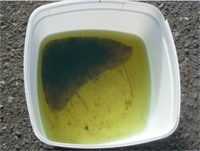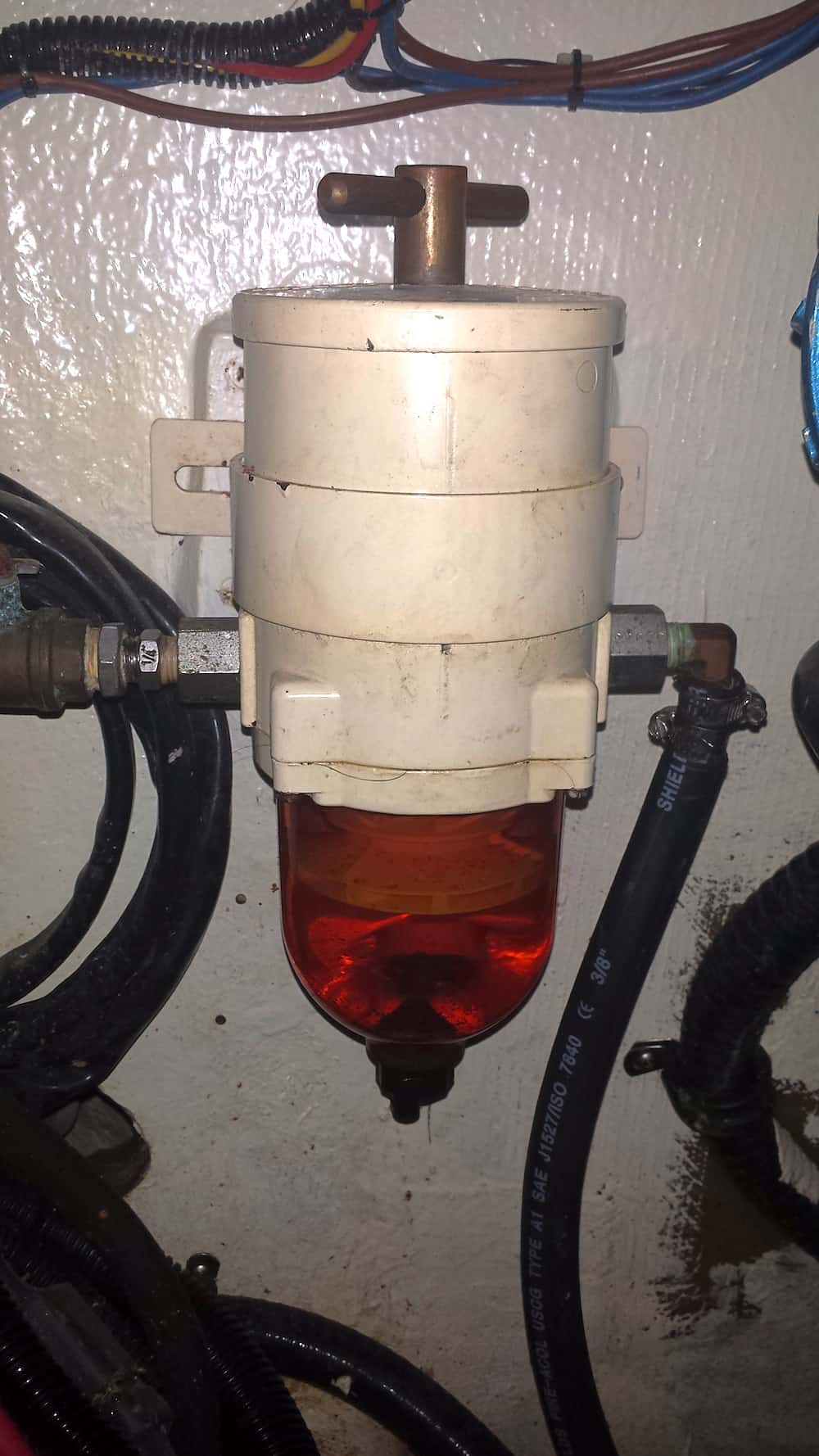 We are getting ready to do a passage up North. Zuri laid up for 9 months last summer in Florida and we have not sailed much since, so we knew that we would have to check the fuel in the tanks for contamination.
We are getting ready to do a passage up North. Zuri laid up for 9 months last summer in Florida and we have not sailed much since, so we knew that we would have to check the fuel in the tanks for contamination.
Because we had a million things to take care of before we left on our road trip in April 2013, I have to confess that we were not as diligent as we should have been about preparing Zuri for a long lay-up. One of the things we did not do was top off the diesel tanks.
After returning from our road trip, when we readied to take Zuri out for a shakedown cruise at the beginning of the season.
We always check our Racor 500 filters (which have a clear bowl to separate water) before leaving the dock and we found some water and sediment in the bowls that looked like sludge. Our fuel contamination would need to be cleaned of water and possibly algae. We immediately called out the fuel filtration guys to clean (polish) our fuel and, lo and behold, we had gallons of water and sludge in the tanks. Admittedly, we have not cleaned our tanks in years and we may have taken on contaminated fuel in the Bahamas. But even so, it was quite a shock to see just how bad it was.
Why does fuel get contaminated?
 Contaminated fuel from a supplier is not the only way water and dirt gets in your fuel tank, here are others:
Contaminated fuel from a supplier is not the only way water and dirt gets in your fuel tank, here are others:
- Leaks around the filler cap that is usually mounted flat on the deck where pooling of water can occur. If the O-ring does not seal properly, it can be the most significant cause for water in your fuel.
- Water also forms inside the tank as condensation, due to the daily heating and cooling cycles or significant cooling and heating because of weather. The more air in the tank, the more potential for condensation.
- Fuel tank vent fittings can also be a source for water to the tanks. So make sure that your vents are positioned in a place where rain and sea spray cannot flood the vents.
Here is another great article by David Pascoe explains water in fuel.
How to prevent boat fuel contamination?
Here are the top tips we have learned to take time for so that we avoid costly cleanup of fuel contamination:
Lesson number one: Don’t let your boat sit around for an extended period of time (9 months in our case) with fuel tanks only partly full. (We knew that!) A full tank minimizes condensation of water on the tank’s interior wall.
Lesson number two: Diesel fuel left undisturbed for a long period of time is a breeding ground for all kinds of microorganisms, kind of like mold in dark, damp places in your house. These microbes require both fuel and water to thrive, so the more water in the fuel, the more algae will flourish. Therefore, fuel should always be treated with biocide to prevent the growth of microbes.
Lesson number three: It is advisable to clean the fuel tank periodically. No matter how careful you are, dirt, water, and microbes do accumulate at the bottom of the tank, just waiting to get churned up in rough and bumpy conditions and clog up your fuel filter, starving the engine of fuel causing the engine to cut out…of course always at the most critical moment!
Best Practises To Prevent Fuel Contamination
- Fresh fuel: Buy from the busiest fuel dock! The fuel turns over regularly.
- Eliminate outside water: Inspect your deck fill annually and make sure the O-ring seals properly.
- Keep a full tank: Half-full tanks will “breathe,” allowing moisture and condensation into the tank.
- Use your engine: Many sailors pride themselves on not running an engine. The problem is, the fuel stays in the tanks for a year or more, allowing for all sorts of bacteria etc. You need to warm up the engine sufficiently and burn some fuel!
- Fuel/water separators and filters: These deliver valuable protection should you get a bad batch of fuel
How to keep your fuel tanks clean by Captain Richard Thiel.
See our article on marine engine maintenance tips.





